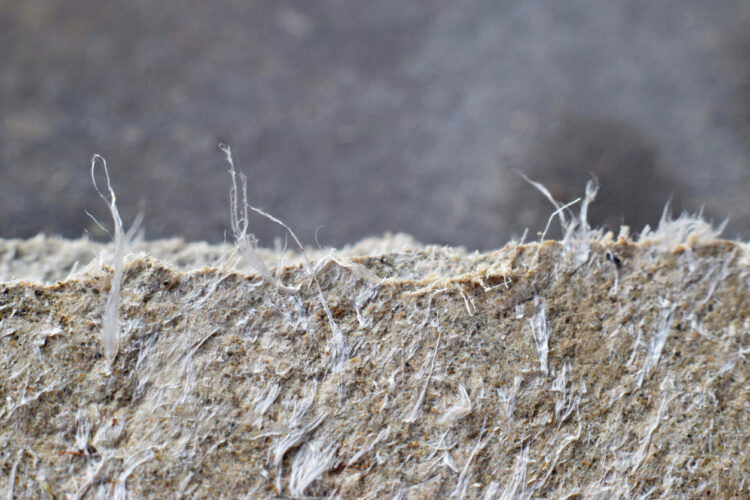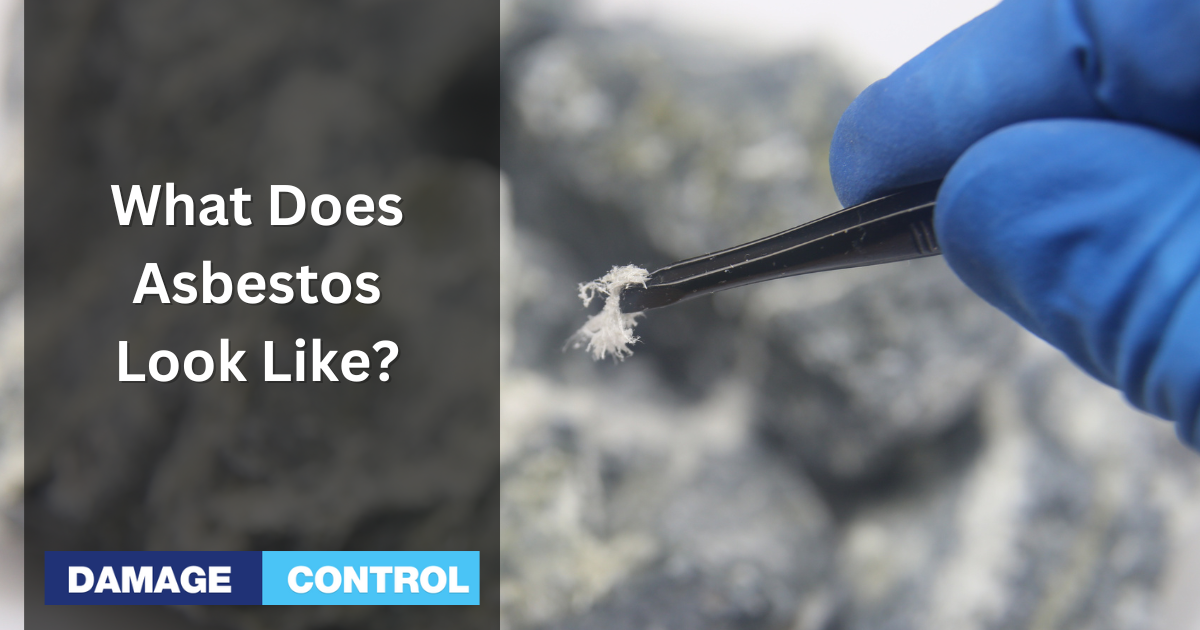Asbestos is a naturally occurring mineral that was commonly used in building materials until the late 1970s. It was popular due to its fire-resistant and insulating properties. However, it has been discovered that asbestos exposure can lead to serious health problems, including lung cancer and mesothelioma.
Therefore, it is important to know what asbestos looks like and how to identify it to avoid exposure.
Asbestos can take on several different forms, including fibers, dust, and tiny particles. It is often found in insulation, roofing materials, and flooring. Asbestos fibers can be blue, brown, or white in color and are often difficult to distinguish from other materials.
Therefore, it is essential to have a professional inspect any suspected asbestos-containing materials before attempting to remove or disturb them.
If you suspect that your home or workplace may contain asbestos, it is crucial to seek professional help. Attempting to remove or disturb asbestos-containing materials on your own can release harmful fibers into the air, which can be inhaled and cause serious health problems.
By learning what asbestos looks like and how to identify it, you can take the necessary steps to protect yourself and your loved ones from exposure.
Physical Characteristics

When it comes to identifying asbestos, there are several physical characteristics to look out for. These include fiber appearance and color.
Fiber Appearance
Asbestos fibers are thin and long, with a length-to-width ratio of at least 3:1. They are composed of many microscopic “fibrils” that can be released into the atmosphere by abrasion and other processes.
The fibers appear straight, flexible, and needle-like when viewed under a microscope. They are often bundled together into groups that resemble a paintbrush.
Color
Asbestos comes in six different types, each with a distinct color. The colors include white, brown, blue, green, gray, and yellow. However, it's important to note that not all types of asbestos are used in building materials.
White asbestos, also known as chrysotile, is the most commonly used type and is found in many building materials such as roofing tiles, insulation, and cement. Less common types of asbestos, known as amosite and crocidolite, are found in insulation and building materials.
It's important to keep in mind that the color of asbestos may not always be a reliable indicator of its presence. Asbestos fibers can be mixed with other materials, making it difficult to identify. Additionally, asbestos fibers can be invisible to the naked eye, making it important to use proper testing methods to determine its presence.
Identifying asbestos can be difficult, but understanding its physical characteristics can help. By knowing what to look for, you can take the necessary precautions to protect yourself and others from the harmful effects of asbestos exposure. Remember always to seek professional help if you suspect asbestos may be present in your home or workplace.
Where Asbestos is Found
Asbestos is a naturally occurring mineral that was widely used in construction materials due to its insulating and fire-resistant properties. Knowing where asbestos may be found in your home or workplace is important to avoid potential exposure.
Common Locations
Asbestos can be found in various locations in buildings constructed before the 1980s. Here are some common areas where asbestos may be present:
- Roofing shingles
- Siding
- Insulation around pipes, boilers, and ducts
- Vinyl floor tiles and the backing on vinyl sheet flooring
- Textured paint and patching compounds used on walls and ceilings
- Popcorn ceilings
- Cement and plaster used in walls and ceilings
- Electrical wiring insulation
Products That May Contain Asbestos
Asbestos was also widely used in various products due to its strength and heat-resistant properties. Here are some examples of products that may contain asbestos:
- Brake pads and linings
- Automobile clutches and transmissions
- Cement pipes and sheets
- Fireproof clothing and gloves
- Gaskets and packing materials
- Heat-resistant fabrics
- Joint compound used on drywall seams
It is important to note that not all building materials or products contain asbestos, but it is always better to err on the side of caution and assume that they do. If you suspect a material may contain asbestos, it is highly recommended to have it tested by a professional asbestos testing company.
Health Risks
Asbestos exposure can lead to various health risks, including asbestos-related diseases. The most common asbestos-related diseases are lung cancer, mesothelioma, and asbestosis.
Asbestos-Related Diseases
Lung cancer is a malignant tumor that invades and blocks the lungs' air passages. Smoking tobacco combined with asbestos exposure greatly increases lung cancer risk. Mesothelioma is a rare form of cancer that is found in the thin lining of the lung, chest, abdomen, and heart.
Asbestosis is a serious progressive, long-term, non-cancer disease of the lungs. Prolonged exposure to asbestos fibers can cause lung tissue scarring and shortness of breath.
Symptoms and Diagnosis
Symptoms of asbestos-related diseases can vary in severity and often manifest years after initial exposure. Lung cancer symptoms include coughing, chest pain, and shortness of breath. Mesothelioma symptoms encompass chest pain, shortness of breath, and weight loss.
Asbestosis symptoms comprise shortness of breath, coughing, and chest pain. Diagnosing these diseases can be challenging due to overlapping symptoms with other respiratory conditions. Doctors employ imaging tests such as X-rays, CT scans, and MRIs, and may conduct a biopsy for confirmation.
Asbestos Testing

If you suspect that your home or workplace may contain asbestos, it is important to have it tested. Asbestos testing can help you determine if there is a risk of exposure and what steps you need to take to protect yourself and others. There are two main types of asbestos testing: DIY testing and professional testing.
DIY Testing
You can purchase DIY asbestos testing kits online or at home improvement stores. These kits usually contain a sample collection tool, detailed instructions, and a prepaid mailer to send the sample to a laboratory for analysis. It is crucial to diligently follow the instructions to obtain a representative sample and avoid exposure to asbestos fibers.
It is important to note that DIY testing may not offer the same level of accuracy as professional testing. Additionally, the results may take longer to receive, and you may need to submit multiple samples if you suspect asbestos presence in various locations.
Professional Testing
Certified asbestos inspectors or laboratories conduct professional asbestos testing, utilizing their training and equipment to safely and accurately collect and analyze samples. Professional testing may be legally required in certain situations, such as during building renovations or demolitions.
The cost of professional testing varies depending on factors like location and the number of samples needed, generally exceeding the cost of DIY testing. To ensure proper testing, selecting a reputable and certified professional is essential.
Regardless of the testing method chosen, taking appropriate action upon asbestos detection is crucial. This may involve sealing, encapsulating, or removing asbestos-containing materials and restricting access to the affected area. Safe handling and disposal procedures are vital to minimize the risk of asbestos fiber exposure. Sometimes, it is best to avoid disturbing the asbestos and leave it undisturbed.
Removal and Handling
When it comes to asbestos, removal and handling, require extreme caution. Asbestos fibers can cause severe health problems, including lung cancer and mesothelioma. Therefore, it is crucial to follow safe removal procedures and dispose of asbestos-containing materials correctly.
Safe Removal Procedures
Removing asbestos is a complex and dangerous process that trained professionals should only perform. The following steps should be taken during the safe removal of asbestos:
- Wear protective equipment such as a respirator, gloves, and coveralls to prevent exposure to asbestos fibers.
- Seal off the area where asbestos removal will take place to prevent asbestos fibers from spreading.
- Wet down asbestos-containing materials to prevent the release of fibers into the air during removal.
- Use proper removal techniques such as cutting, scraping, or using a HEPA vacuum to remove asbestos-containing materials.
- Dispose of asbestos-containing materials in designated containers or bags labeled as hazardous waste.
Disposal
Asbestos-containing materials must be disposed of according to local and federal regulations. Improper disposal of asbestos can result in fines or legal action. The following are some guidelines for asbestos disposal:
- Contact your local environmental agency to determine the proper disposal procedures for asbestos-containing materials.
- Double bag asbestos-containing materials in heavy-duty plastic bags labeled as hazardous waste.
- Transport asbestos-containing materials to an authorized hazardous waste disposal facility.
- Do not dispose of asbestos-containing materials in regular trash or recycling bins.
In conclusion, removing and handling asbestos requires extreme caution and should only be performed by trained professionals. Safe removal procedures and proper disposal must be followed to prevent exposure to asbestos fibers and protect public health. Always consult with local authorities and follow regulations for asbestos removal and disposal.

